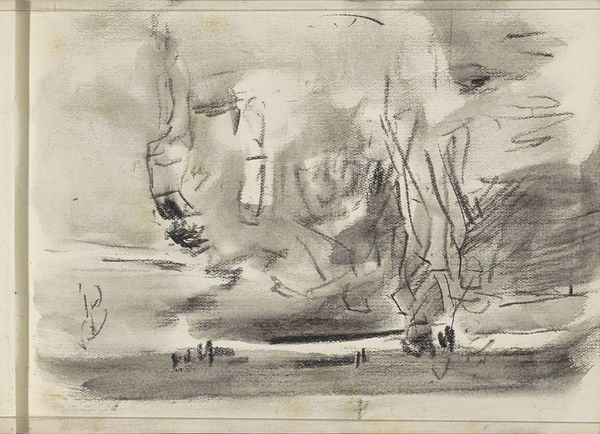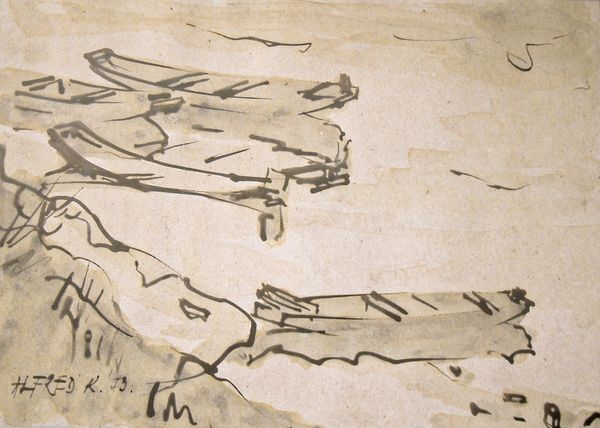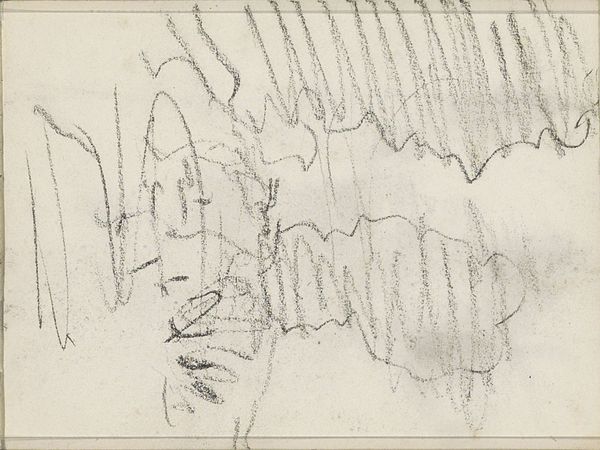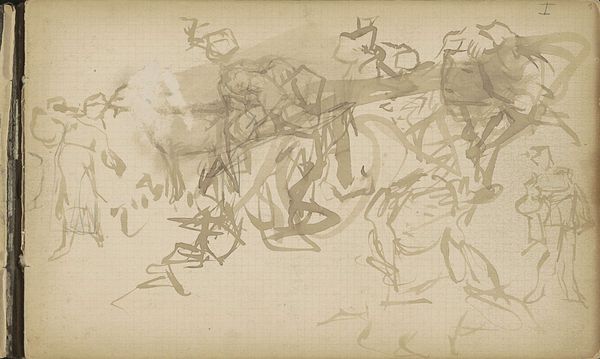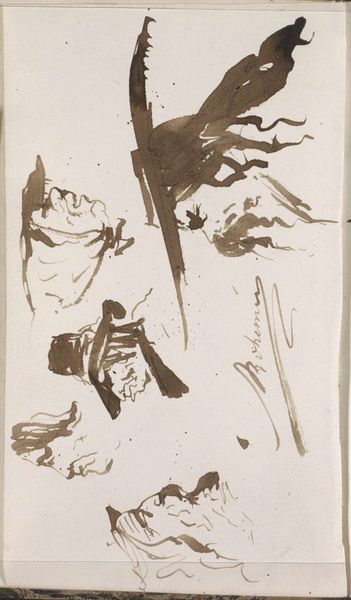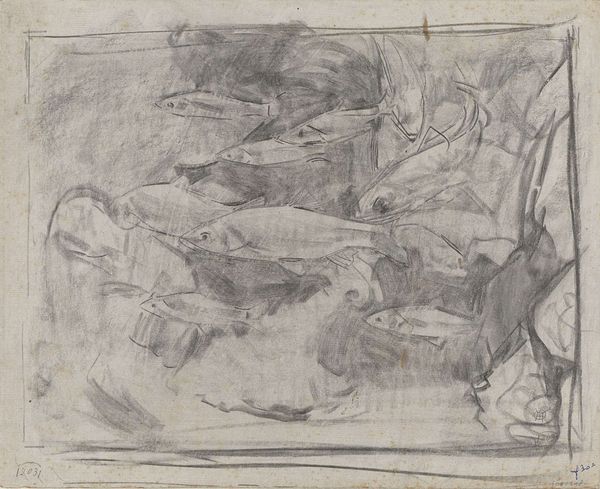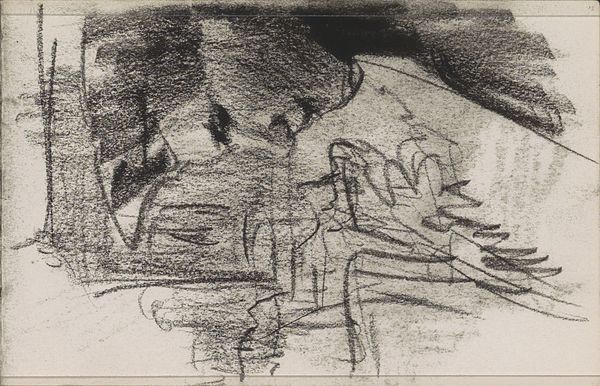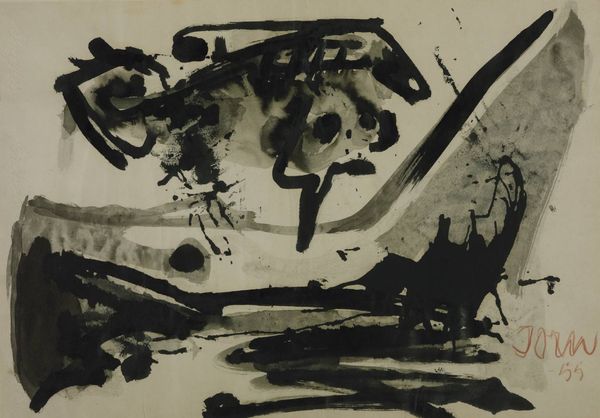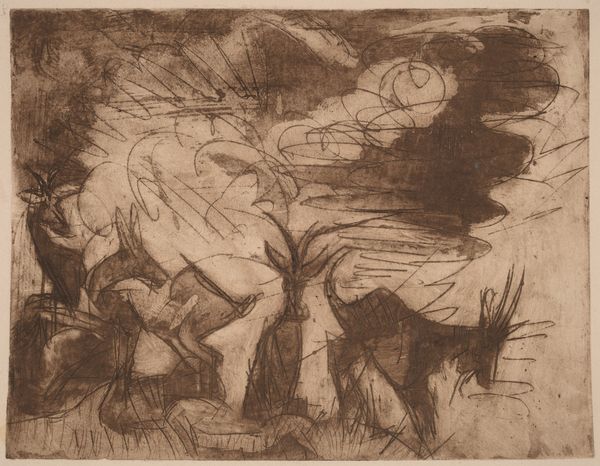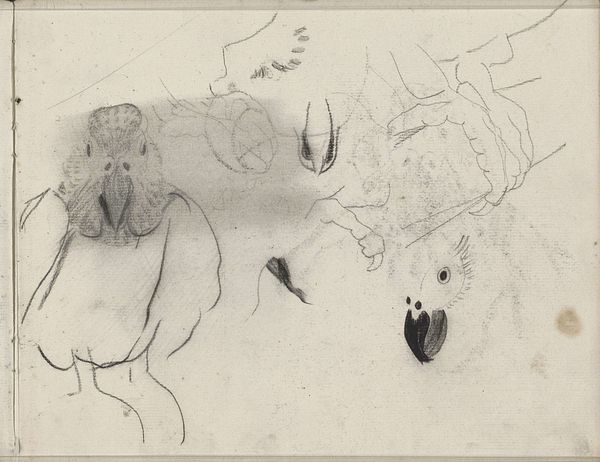
The Garden of Love (Improvisation Number 27) by Wassily Kandinsky 1913
0:00
0:00
Dimensions: sheet (trimmed to image): 18.1 × 21.1 cm (7 1/8 × 8 5/16 in.)
Copyright: National Gallery of Art: CC0 1.0
Curator: Wassily Kandinsky's "The Garden of Love (Improvisation Number 27)," painted in 1913. It strikes me with its stark black and white tonality—such a contrast to his vibrant later works. Editor: Immediately, I perceive an undercurrent of turmoil. Even absent colour, the swirling forms evoke a sense of unease, almost as if the "garden of love" is fraught with unspoken tensions. Curator: The title is deceptive, isn’t it? Looking at it through the lens of its production, one can understand why: 1913 was a year of immense social and political unrest in Europe. These feelings likely impacted the emotional tenor of the work. Editor: Absolutely. And considering Kandinsky's personal context, his exploration of spirituality and Theosophy is central. These weren't simply aesthetic choices but reflected deep intellectual and social questions. Did he envision a transformative potential in art amidst impending chaos? Curator: The application of the paint itself is quite striking—the thick, almost sculptural quality in some areas versus the very thin washes, giving us an idea of how materiality plays a part here, don’t you think? Editor: It is powerful. He seems to explore a connection between art, feeling, and lived experience in those choices, perhaps an intentional disruption of traditional artistic labor. Curator: Certainly, disrupting the accepted aesthetic parameters was the point. What else comes to mind? Editor: It makes me question what exactly the materials and construction say about the artist's social-economical stand point and their social milieu in Russia at this moment in time. Did that chaos push him to more extreme measures? The scale seems so monumental for something intended for, seemingly, the personal introspection? Curator: "The Garden of Love (Improvisation Number 27)." A window into a turbulent period, seen through the lens of material exploration. Editor: Exactly, where abstraction wasn’t just about aesthetics; it was intertwined with the urgent matters of identity and existence.
Comments
No comments
Be the first to comment and join the conversation on the ultimate creative platform.

